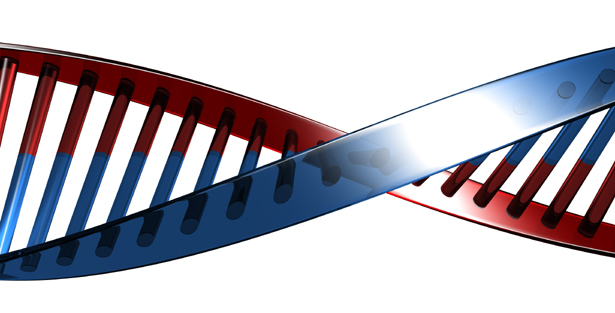What’s A Genotype? What’s A Phenotype? And Why Do I Care?

Genetics research is interesting stuff, and news stories about exciting new findings seem to crop up almost daily. But many people simply don’t have the vocabulary to understand what’s going on. “What is a genotype anyway?” you might ask. “What’s a phenotype? And why should I care?” Good questions! Let’s talk about this a little bit.
To start with, genes are functional units in an organism’s genetic code. Each gene is made up of nucleic acids (DNA or RNA), which can be organized into functional sub-units called exons. If encoded in DNA, genes are “transcribed” into RNA, which can then be translated into specific proteins. These proteins have specific marching orders, and will go on to become part of the organism’s body or to contribute in some way to how it functions.
Many of these protein-coding genes can be used to create different “transcripts” of RNA, by using varying combinations of their constituent exons. (The gene essentially serves as a master copy, and most cells have transcriptional machinery that actually creates the RNA.)
So, what is a genotype? Broadly speaking, a genotype is the genetic constitution of an individual organism. For example, my genotype is my specific genetic make-up – not the genetic make-up of humans in general.
A phenotype, on the other hand, is made up of the observable traits of an organism. This includes physical traits (such as height) and behavioral traits (such as aggressiveness). It also includes traits that can only be observed using specialized equipment, such as different levels of gene expression.
That last example is called an intermediate phenotype, because you can tell that changes in DNA have an effect (such as the level of gene expression), but it’s not clear how that effect is manifested. For example, does the change in level of gene expression affect the organism’s metabolism, behavior, etc.?
Genotype and phenotype are clearly discrete ideas, but they are often mentioned in tandem. That’s because a lot of current research focuses on how genotype affects phenotype. For example, we know that a person’s genotype is responsible for his or her eye color – but which specific genes are involved? This is complicated, because our traits result from combinations of genes. There is rarely a trait that is linked to only one specific gene.
To address this question, researchers are developing so-called genotype-phenotype “maps,” which attempt to tell us the genetic basis for a phenotype. Specifically, researchers want to know not only which genes are involved, but which variations within those genes are associated with a particular trait.
For example, researchers have determined that the BRCA1 gene is linked to breast cancer risk in humans. But simply having this gene does not tell us much, because only specific variations of BRCA1 have been associated with increased risk.
Here’s why you should care about all this: these genotype-phenotype mapping efforts could have a significant impact on human quality of life in fields ranging from medicine to global hunger. Which genes put humans at risk of diabetes? In rice species, which genes make a plant susceptible to common diseases? These are only two (admittedly broad) questions, but answering either would affect millions of people – or more.
After writing this very basic introduction to some of the common terms used in genetics, I ran across a similar post by noted science blogger (and biologist) Bora Zivkovic. He did such a good job that I almost scratched this post. Instead, I decided that there is room for more than one attempt to explain these terms to a non-expert audience. Read them both and let me know what you think. And, if there’s more you want to know, leave a comment. I’ll try to tackle it in a future post.
Note: Many thanks to Dr. Nadia Singh, an assistant professor of genetics at NC State, for taking the time to talk to me about the lexicon of her field. Any errors in the above post are mine and mine alone.
- Categories:


